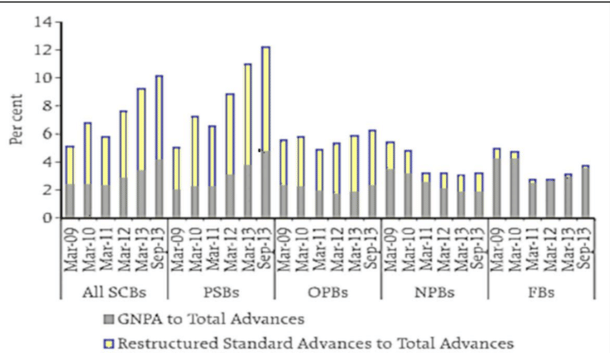News Brief
White Paper On Indian Economy: What The Document Says On 'Massive' UPA-Era Banking Crisis
Kuldeep Negi
Feb 08, 2024, 07:05 PM | Updated 07:12 PM IST
Save & read from anywhere!
Bookmark stories for easy access on any device or the Swarajya app.


The 'White Paper on the Indian Economy' presented by Union Finance Minister Nirmala Sitharaman on Friday (8 February) highlights the "massive" banking crisis during the UPA regime.
"The banking crisis was one of the most important and infamous legacies of the UPA government," the White Paper said.
The document highlights that the political interference by the UPA government in the commercial lending decisions of public sector banks was one of the primary reason for the banking crisis.
"When the Vajpayee-led NDA government took office, the Gross Non-Performing Assets (GNPA) ratio in Public Sector banks was 16.0 per cent, and when they left office, it was 7.8 per cent," the document noted.
"In September 2013, this ratio, including restructured loans, had climbed to 12.3 per cent largely because of political interference by the UPA government in the commercial lending decisions of public sector banks (Chart 2). Worse, even that high percentage of bad debts was an underestimate," it added.

According to the document, the banking crisis in 2014 was "massive, and the absolute sum at stake was too large".
"Gross advances by public sector banks were only Rs 6.6 lakh crore in March 2004. In March 2012, it was Rs 39.0 lakh crore. Further, not all problem loans were recognised. There was much under the hood," it said.
Citing a March 2014 Credit Suisse report, the White Paper said that the top 200 companies with an interest coverage ratio of less than one owed about Rs 8.6 lakh crore to banks.
"Nearly 44 per cent of those loans (Rs 3.8 lakh crore) were yet to be recognised as problem assets. That alone would have added another 6.7 per cent to the GNPA ratio," the paper said.
Kuldeep is Senior Editor (Newsroom) at Swarajya. He tweets at @kaydnegi.





